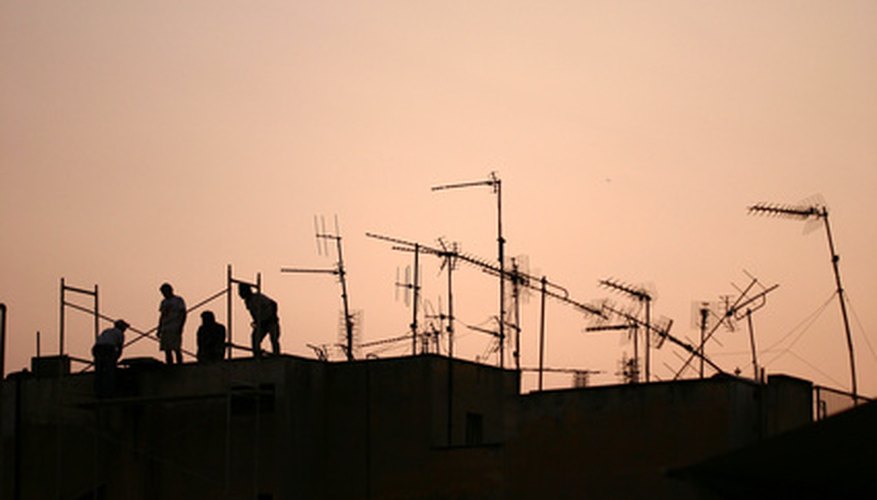Most countries are switching from old-style analogue TV systems in favour of digital terrestrial TV. The advantages of digital TV include a wider choice of TV channels and high-definition TV through a standard TV antenna. Digital TV has a downside, too. Many viewers encounter technical problems when their local analogue TV transmitter is switched off and some have to upgrade antennas and TV sets before they can tune to the new digital TV channels.
Antenna Upgrade
Antennas need a strong digital signal, so you might need to upgrade, amplify or realign your TV antenna to receive a satisfactory digital signal.
Antenna Alignment
Digital signals provide less feedback than analogue, so aligning a TV antenna without a signal meter is more difficult.
Long-Range Problems
Tuning to distant TV stations is more difficult. Digital TV signals drop out completely below a certain level, whereas analogue TV signals degrade gradually, allowing a watchable (if sometimes grainy) picture at greater distances from the transmitter.
- Most countries are switching from old-style analogue TV systems in favour of digital terrestrial TV.
- Digital TV signals drop out completely below a certain level, whereas analogue TV signals degrade gradually, allowing a watchable (if sometimes grainy) picture at greater distances from the transmitter.
New Equipment
Old-style analogue TV sets cannot receive digital TV transmissions, so you will need to buy a set-top box or new TV set to watch digital stations.
Energy bills
Your power bill will be a little higher if you need a set-top digital box as well as a TV set.
Slow Channel Change
Changing TV channels is slower than with analogue TV because it takes a little time for your receiver to decode the digital signal.
